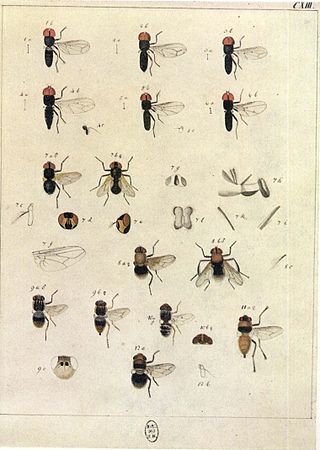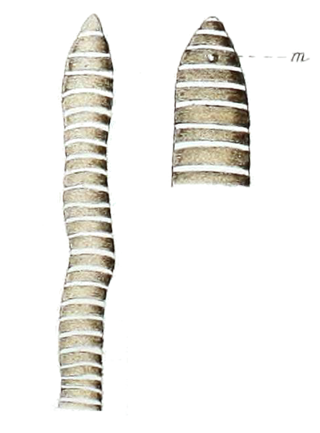
Lineus is a genus of nemertine worms, including the bootlace worm, arguably the longest animal alive. Lineus contains the following species:

Inca cuisine originated in pre-Columbian times within the Inca civilization from the 13th to the 16th century. The Inca civilization stretched across many regions, and so there was a great diversity of plants and animals used for food, many of which remain unknown outside Peru. The most important staples were various tubers, roots, and grains. Maize was of high prestige, but could not be grown as extensively as it was further north. The most common sources of meat were guinea pigs and llamas, and dried fish was common.

The Gobionellinae are a subfamily of fish which was formerly classified in the family Gobiidae, the gobies, but the 5th Edition of Fishes of the World classifies the subfamily as part of the family Oxudercidae. Members of Gobionellinae mostly inhabit estuarine and freshwater habitats; the main exception is the genus Gnatholepis, which live with corals in marine environments. The subfamily is distributed in tropical and temperate regions around the world with the exception of the northeastern Atlantic Ocean, the Mediterranean Sea, and the Ponto-Caspian region. It includes around 370 species and 55 genera: Wikipedia articles about genera list about 389 species.

Odontobutis is a genus of freshwater sleepers native to East Asia and Vietnam. Species in this genus are generally ambush predators with stout bodies, large heads and a wide, rounded pectoral fins. They can be found in small ponds, lakes and river habitats, often in fresh water of brackish water. This genus evolved during the early Miocene epoch during the Neogene period.
Metzia is a genus of cyprinid fish that is found in eastern Asia. The genus is named in honor of the American ichthyologist Charles William Metz of Stanford University.

Tubulanus is a genus of primitive nemertean worms in the order Palaeonemertea.
Dorylomorpha is a genus of flies belonging to the family Pipunculidae.
Emplectonema is a genus of worms belonging to the family Emplectonematidae.
Cephalops is a genus of flies belonging to the family Pipunculidae.

Chalarus is a genus of flies belonging to the family Pipunculidae.

Baseodiscus is a genus of nemerteans belonging to the family Valenciniidae.

Cerebratulus is a genus of nemerteans belonging to the family Lineidae.
Zygeupolia is a genus of nemerteans belonging to the family Lineidae.
Tetrastemma is a genus of nemerteans belonging to the family Tetrastemmatidae.
Euborlasia is a genus of worms belonging to the family Lineidae.
Nipponnemertes is a genus of worms belonging to the family Cratenemertidae.
Neesiidae is a family of worms belonging to the order Monostilifera.
Quasitetrastemma is a genus of worms belonging to the order Monostilifera, family unassigned.

Zygonemertes is a genus of worms belonging to the family Zygonemertidae.








